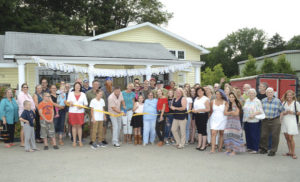Sales is everywhere.
This summer, I worked for 40 hours a week at a local garden center and 10 more picking up donations for a non profit called Harbor Country Mission. When I reflect on the summer in light of our class discussion of the salesman, I learned more about sales by picking up furniture, paintings, jewelry, books, records, other vintage finds. While learning basic facts and traits of the flowers, soil, and fertilizer I sold in at the garden center practiced my ability to deliver clear information and provide guidance in the sales process, the job working sales in retail paled in comparison to the experience I received representing the work of a startup nonprofit in non sales situations. Both stretched different aspects of the salesman that we have discussed in class, but the non sales selling required to tell the story of HCM was more rewarding than any job in direct sales.

Each morning I woke up to a text from my former youth pastor Dave. Dave had taken up this new venture to tangibly reach the community by funding simple home repairs in areas of rural poverty. The funds came from the retail of the donations I amassed before my closing shift at the garden center. Despite being a pastor by training, Dave is more than that. Dave commands an ability to persuade and an aptitude for sales. Tom Sawyer’s ability to crowdsource the whitewashing of a fence is a far cry from convincing a college student who already works full time to drive a van all summer long. He embodies the ideal salesman we described in class, who understands that people like to buy, but not to be sold to.
From this example I learned to represent the pitch of HCM in stories of what we’ve been able to accomplish in the community that donors already care about. A poor, but simple approach to this pitch could be to represent effect of HCM by memorizing the overarching business plan to describe to potential donors. Instead of this, I simply described the ways donated items like an unwanted have been able to serve single parents without transportation or the dilapidated homes that have already undergone repair thanks to sales of household junk. I learned to relate to total strangers by first establishing a relationship with them; understanding the ways we could serve them to ultimately serve the community. This relational basis for exchange resulted in further participation from the donors. Everyone I connected with quickly realized how their donation made an impact. While some only visited the storefront, many frequented the storefront and even backed the mission at future fundraising events